Small Bedrooms: How to Create a Sleep Sanctuary in 6 Simple Steps
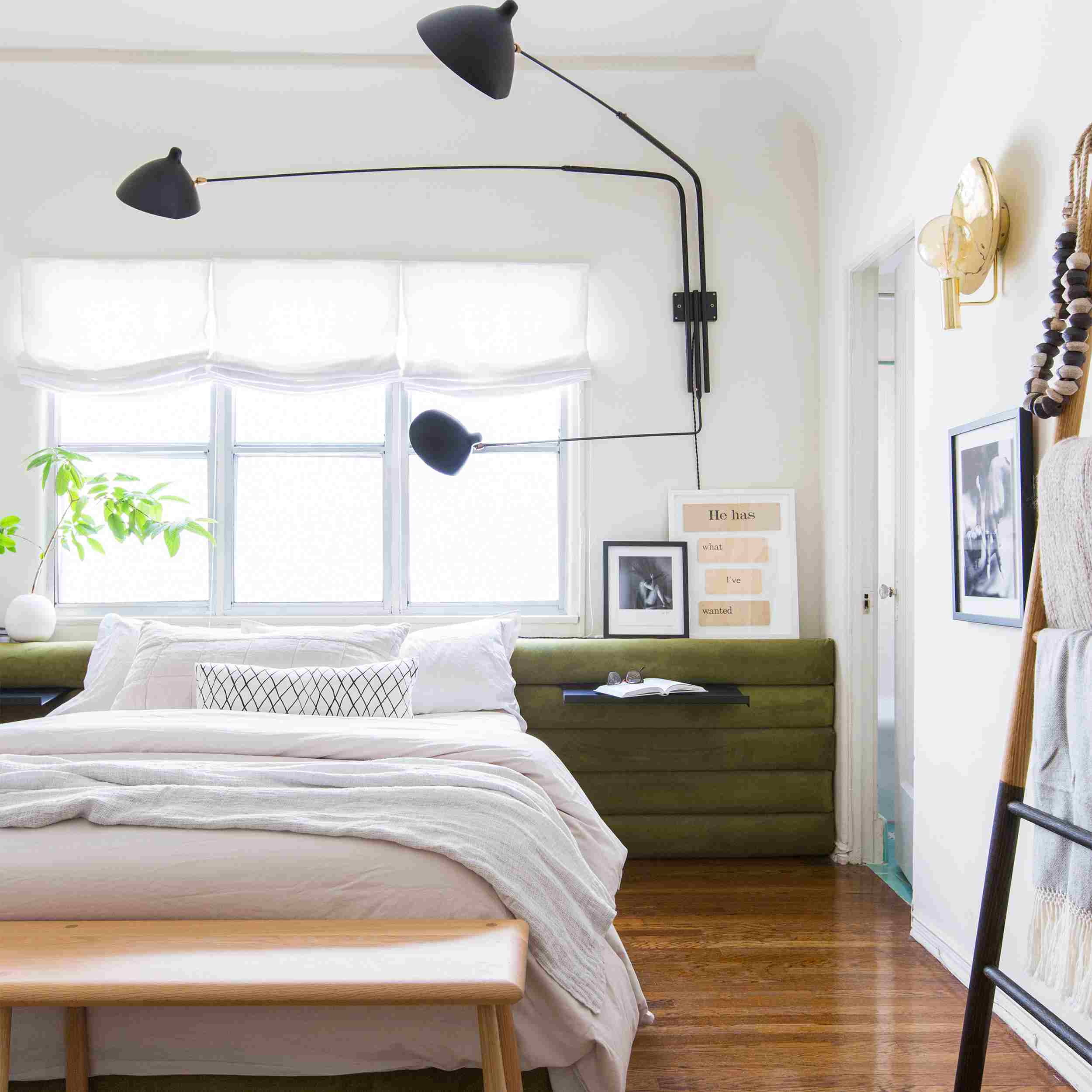
Small bedrooms should be just as dreamy as spacious ones, and we’re here to tell you that you can create a 5-star hotel experience in your own home by following just a few easy steps!
Let’s dive in:
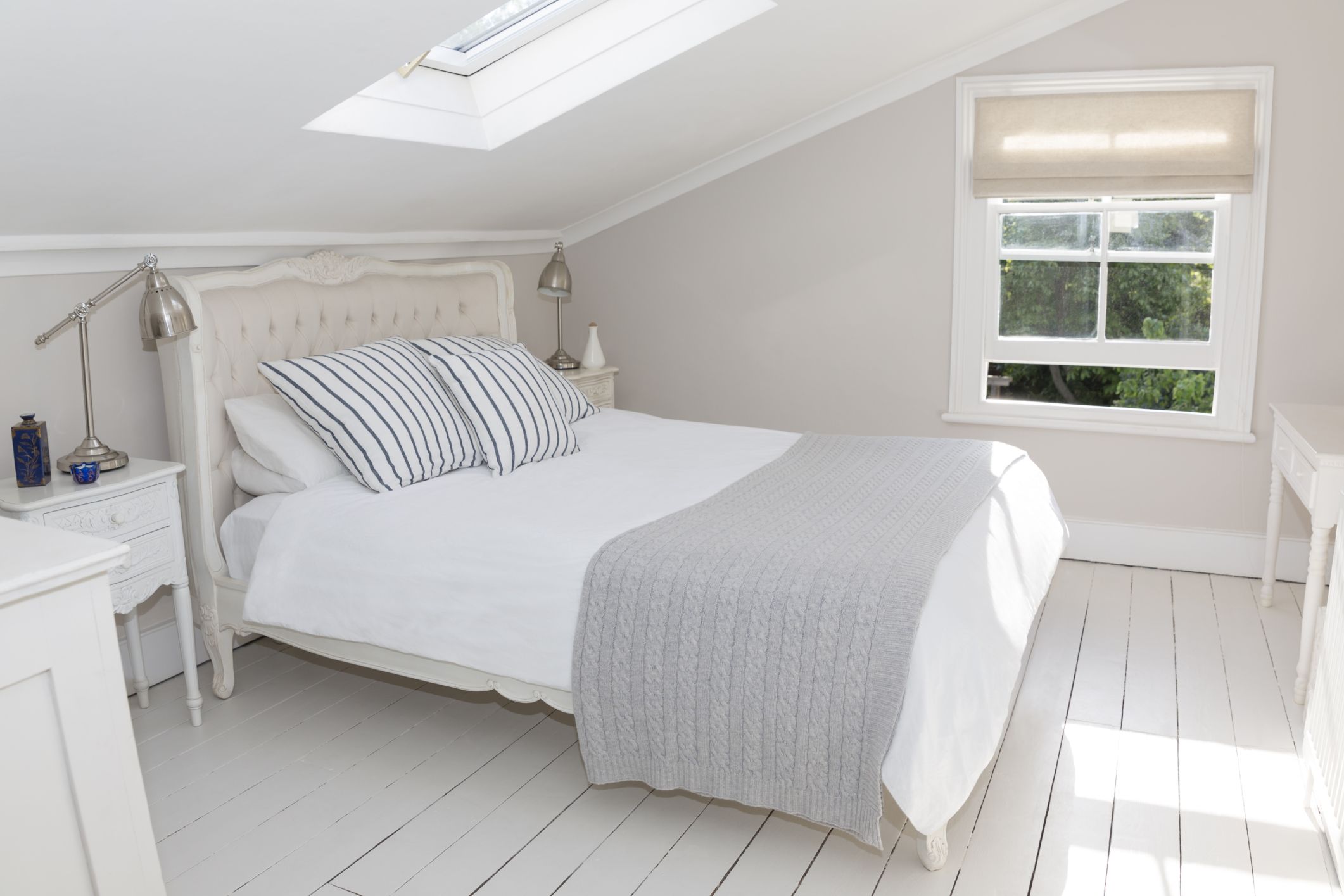 1. Be mindful of your color palette
1. Be mindful of your color palette
There are many ways to do color palettes, but our go-to strategy is to keep the contrast levels low and choose recessive tones.
What Are Recessive Tones?
These are colors that recede or move away from you. If you really want to create a sleep sanctuary, stick to deep blues and greens or soft neutrals. Color has a direct effect on our emotional and energetic state, and these recessive, cooler colors will help make you feel calm and quiet so you can mellow out at the end of a long day!
If you like crisper whites- that works too, as it can be calming in the right shade; however, you need to keep the accent tones soft. Go with ivories, vanillas, off-whites, and light natural woods.
What About Colors?
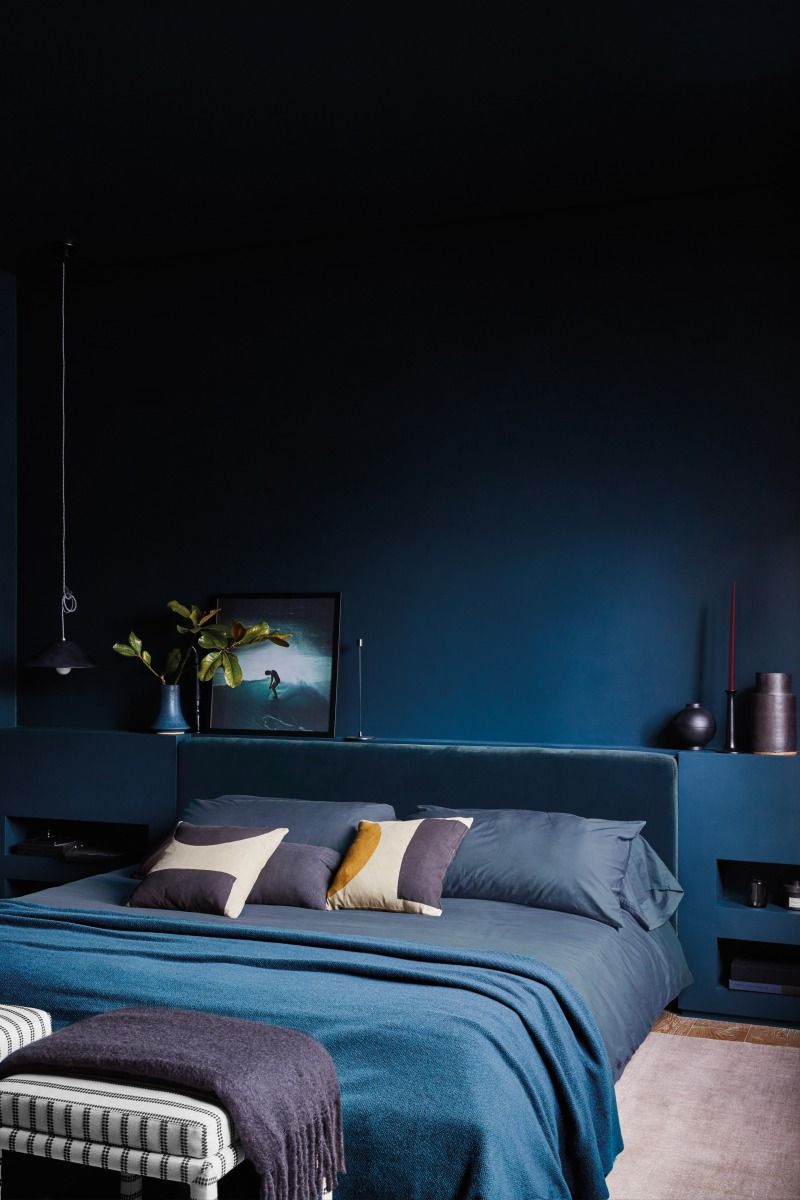
You can use richer colors as long as the bedroom is closed off/separated from the rest of the space, so if you’re in a studio, this is a no-go. If you have the option of richer tones, you’ll want to make it a monochromatic story in order to make the whole space feel bigger.
You can incorporate one tonal change up or down through accessories like throws or pillows, but everything else, from the walls to the trim, windows, and doors- all need to be the same color/value. The goal here is to make all the dividing lines in that room go away visually. To learn more, check out this video: Stop Painting Now!
You might wonder, “But won’t that look boring and just…blah?” Answer: NO! By keeping everything monochromatic, the space will appear very intentional, customized, and high-end.
Also, skip the patterns for small spaces! Textural changes all day long, but you should really pass on the patterns. Okay, MAYBE an itty bitty tonal pinstripe, but that’s it!
And you NEVER want to do a bedroom in red or orange! Unless, of course, you hate sleeping- if that’s the case, then go for it!
2. The Bedding Needs to Blend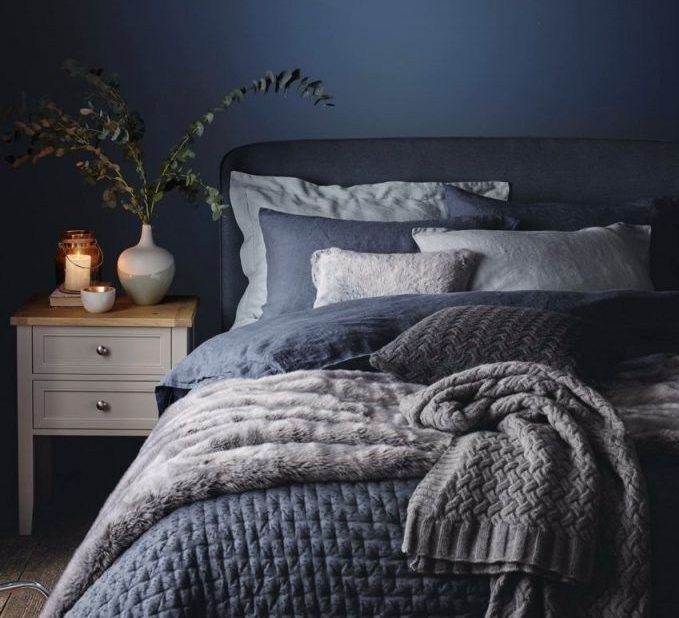
In a small bedroom, your bedding should be a tonal story that is very close to your envelope color, so linens need to be the same hue and a similar value as the walls.
Because it’s the single biggest visual element in the room, that bed must blend in! So if you’ve gone dark in your rooms, like a rich blue, you want the bed to have that feel as well.
Don’t make the rookie mistake of popping a bright white bed into a dark room- it’s going to make the space look TINY.
3. Get Your Lighting Sitch on Point
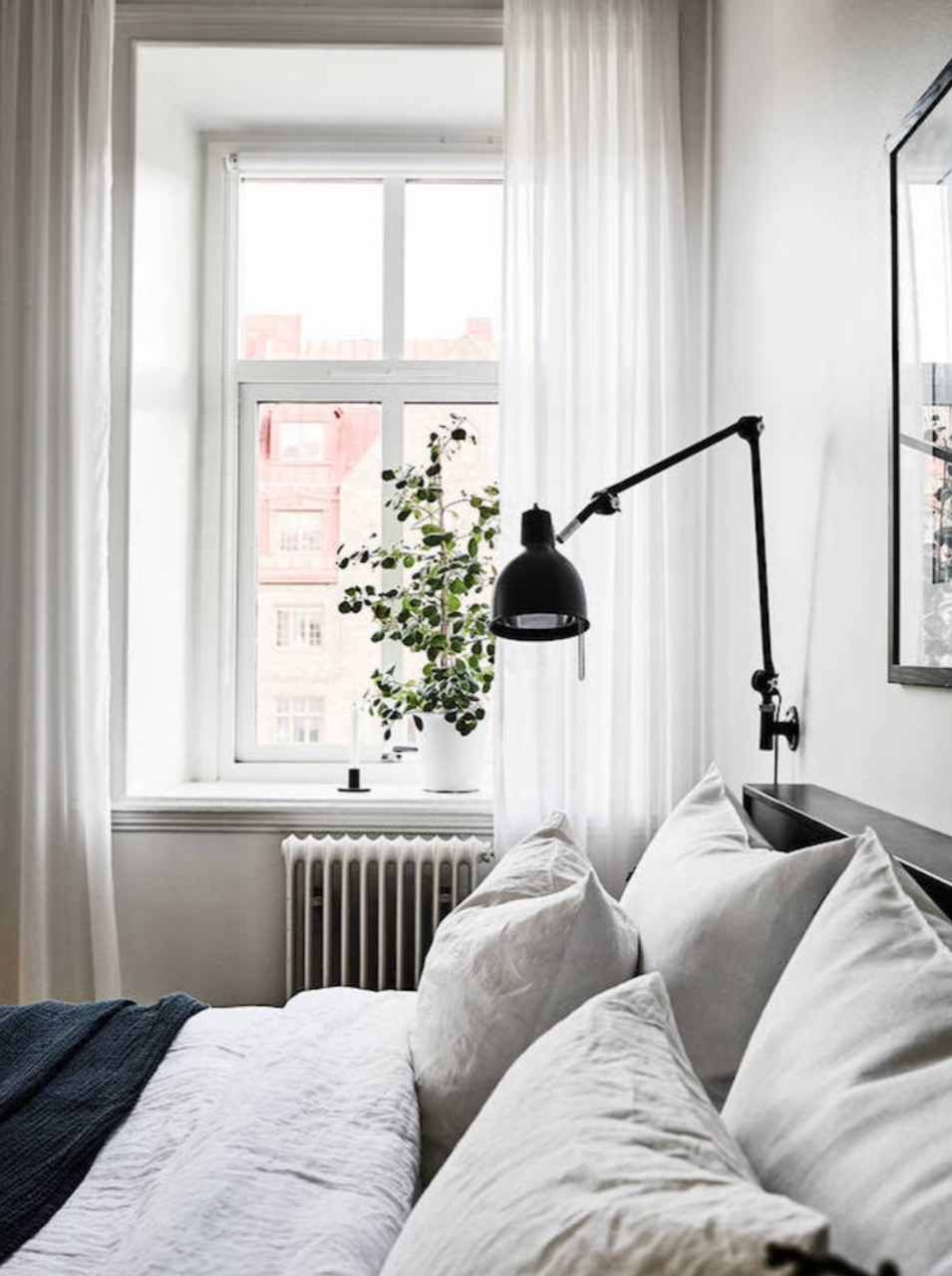
Handle your lighting in a way that gives you the flexibility to control brightness. That is so key! I almost exclusively put in blackout window treatments for all primary bedrooms.
Make sure to maximize all the natural light you can, but you still want to be able to close those windows down to blackout if you need them to. Afternoon nap, anyone? 😴
You should check out these videos for more drapery deets: THE TRUTH ABOUT DRAPERY (What you NEED to know now) and WHAT YOU’RE DOING WRONG with Windows, and How To Fix It
Remember you need three sources of light (ambient, task, accent/decorative), whether that’s a ceiling fixture, pendant lighting, a bedside table lamp, or strip lighting under a shelf. The fixtures themselves don’t have to be tiny as long as the fixtures feel light in scale. Replace the ceiling fan (if you don’t need it), or be sure to use a low-profile, attractive one that fits your bedroom thematically.
Are you feeling a little in the dark when it comes to lighting? Let us shed some light on the subject: Get the Glow Down: The 3 Types of Lighting Your Home MUST Have
4. Become a Storage Ninja
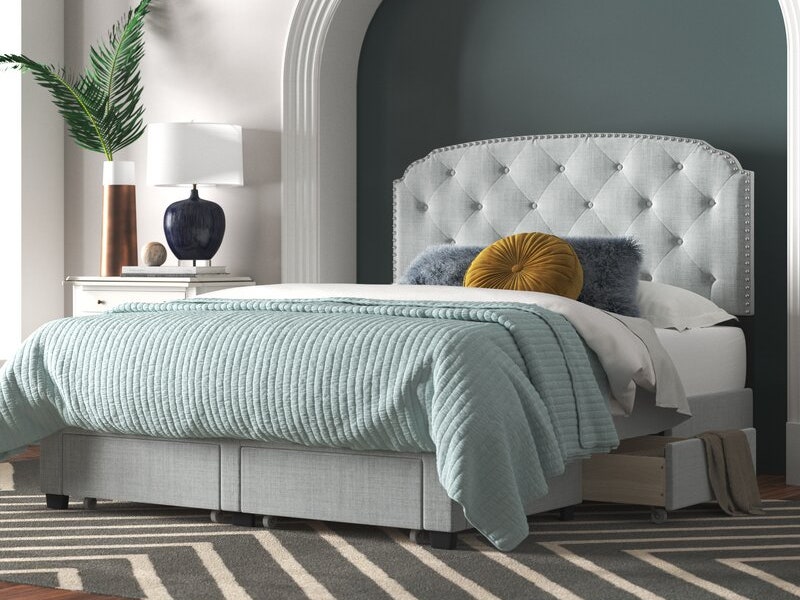
If you haven’t already noticed, we talk A LOT about storage because it’s THAT important! Really, what’s the point of a beautiful bedroom space that you can’t actually live in?! So, let’s avoid the “dysfunctional chic” vibe, shall we? Here’s how you do it:
Double Duty
Everything needs to pull double duty! You can achieve this through storage/captain’s beds, storage under the bed, storage stools/benches, etc.
Go Vertical
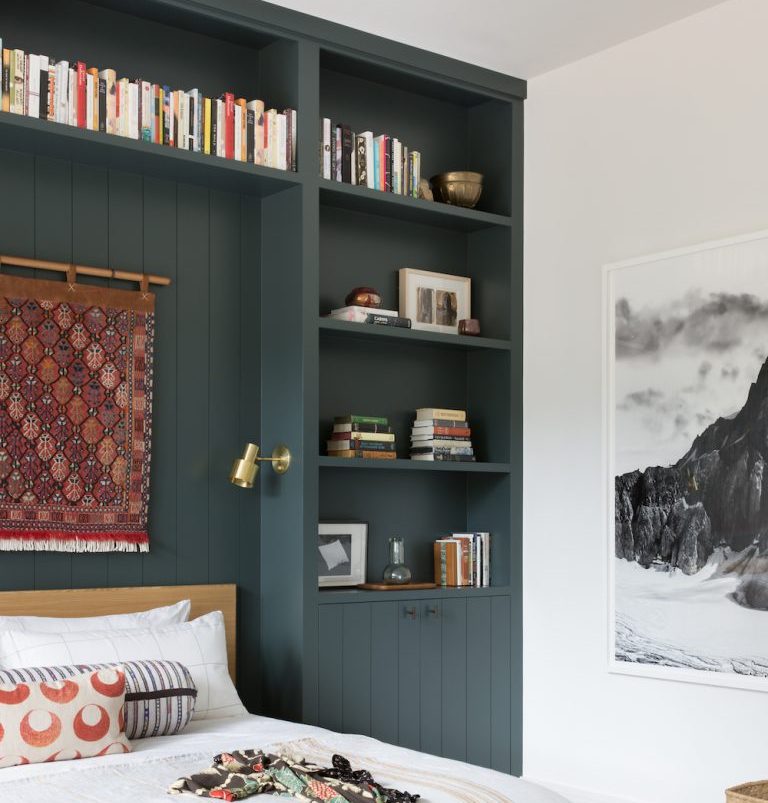
Go vertical and get creative with your storage solutions!
For example, you can incorporate storage above your headboard, like low profile cabinets at the top of the wall (if it’s recessed) above your bed, or floating shelves, but keep in mind this is a no-go in earthquake country.
Dresser Alternatives
A standard dresser is 20+ inches deep, so if you don’t have room for that, you can use a bookshelf, which is around 8-15 inches in depth. It makes a fantastic dresser alternative when used with coordinating baskets- keep in mind that the baskets need to be the same color or value as the walls (and so do the shelves.) You can install narrow floating shelves and stack folded sweaters and jeans and/or place baskets on them for other small items.
5. Must-have Furnishings
Yes, even in a small bedroom, you’ll still need more than a bed. Let’s discuss…
Sitting Spot
You need a sitting spot other than the bed- like a stool/bench with storage or a small chair.
PRO TIP: If you go the chair route, be sure to get one with legs so you can fit a basket underneath for slippers or extra blankets/pillows. Storage Ninja indeed. 🥷
Headboard
If you have a tiny room, doing a big and tall headboard doesn’t serve you, but what you can work with is an extended headboard, which can be as simple as a fabric panel.
You also want your headboard to be low profile in terms of depth and height. Think slim.
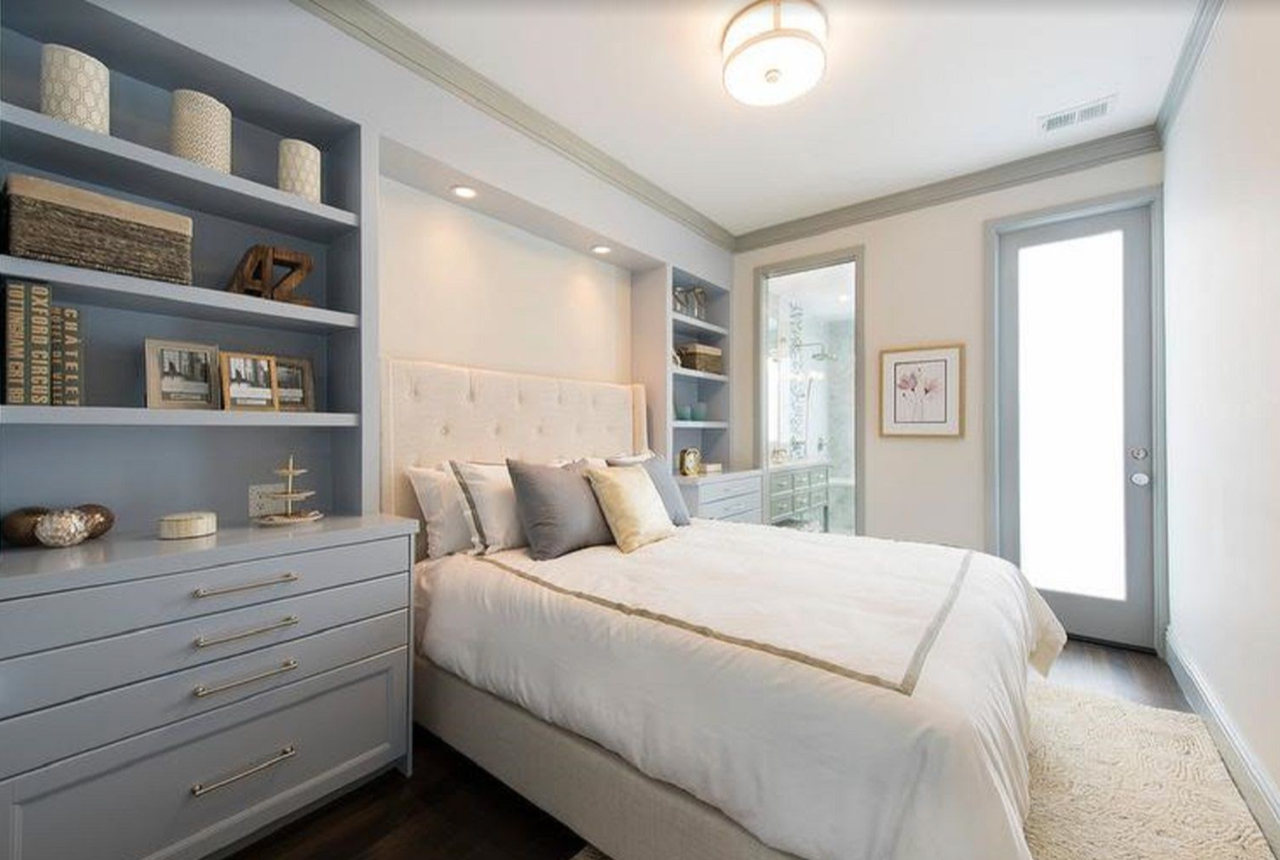 Nightstands
Nightstands
Sometimes, rooms aren’t big enough for two nightstands, but you still have plenty of options.
Instead of a standard nightstand, use a base cabinet below floating shelves, and be sure to use LED strip lighting along the bottom of them for a high-design effect.
If you own the place, definitely consider doing a built-in bookcase inside the wall next to the bed.
(Big) Rug
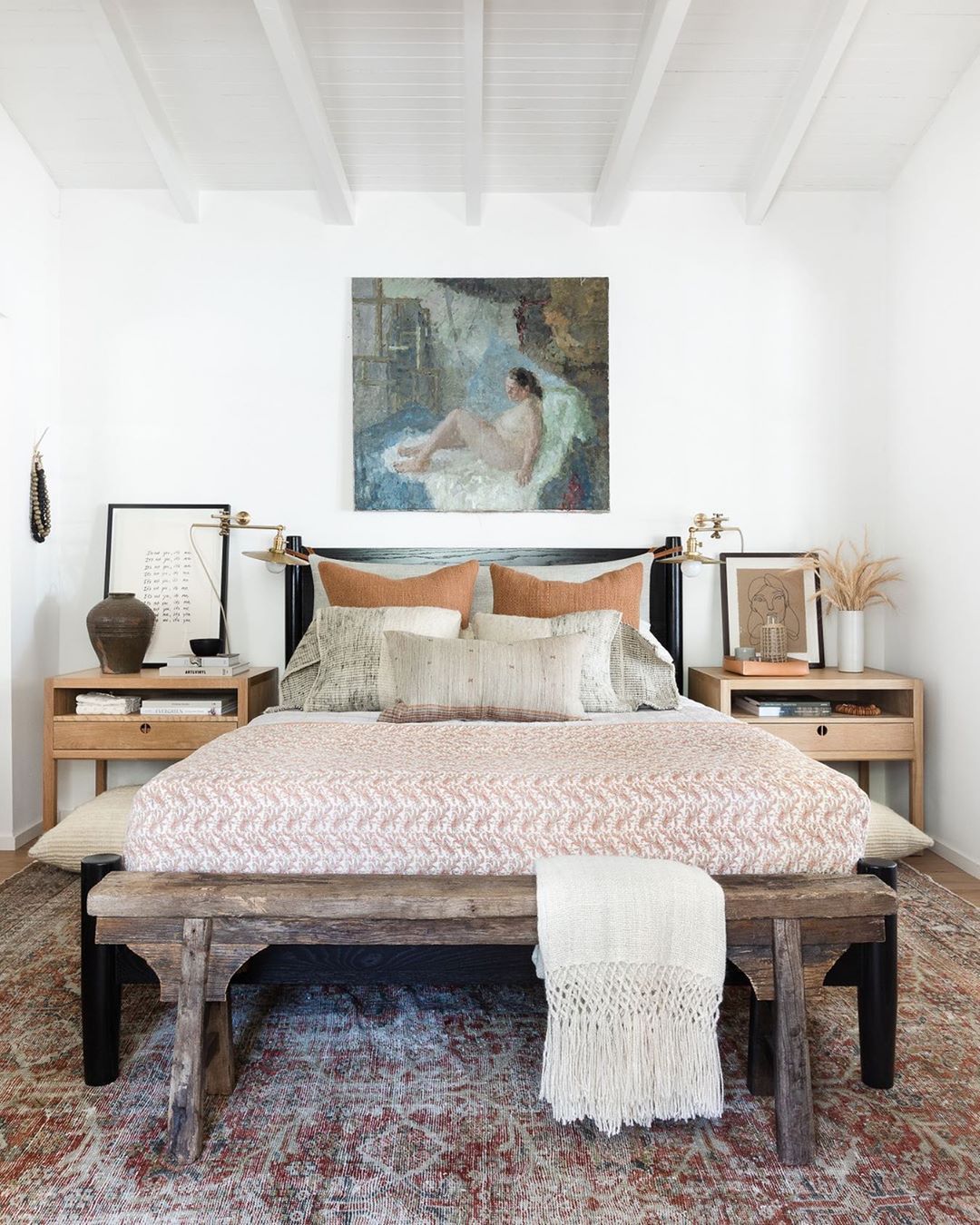
The technique here is that the bigger the rug, the bigger the room will appear- even consider going almost wall to wall with a rug! And watch your texture! You want the rug to be comfy underfoot- but a tiny bedroom is not the place to put an uber-long shag or huge flokati. Think flatweaves, low pile, handwoven, etc.
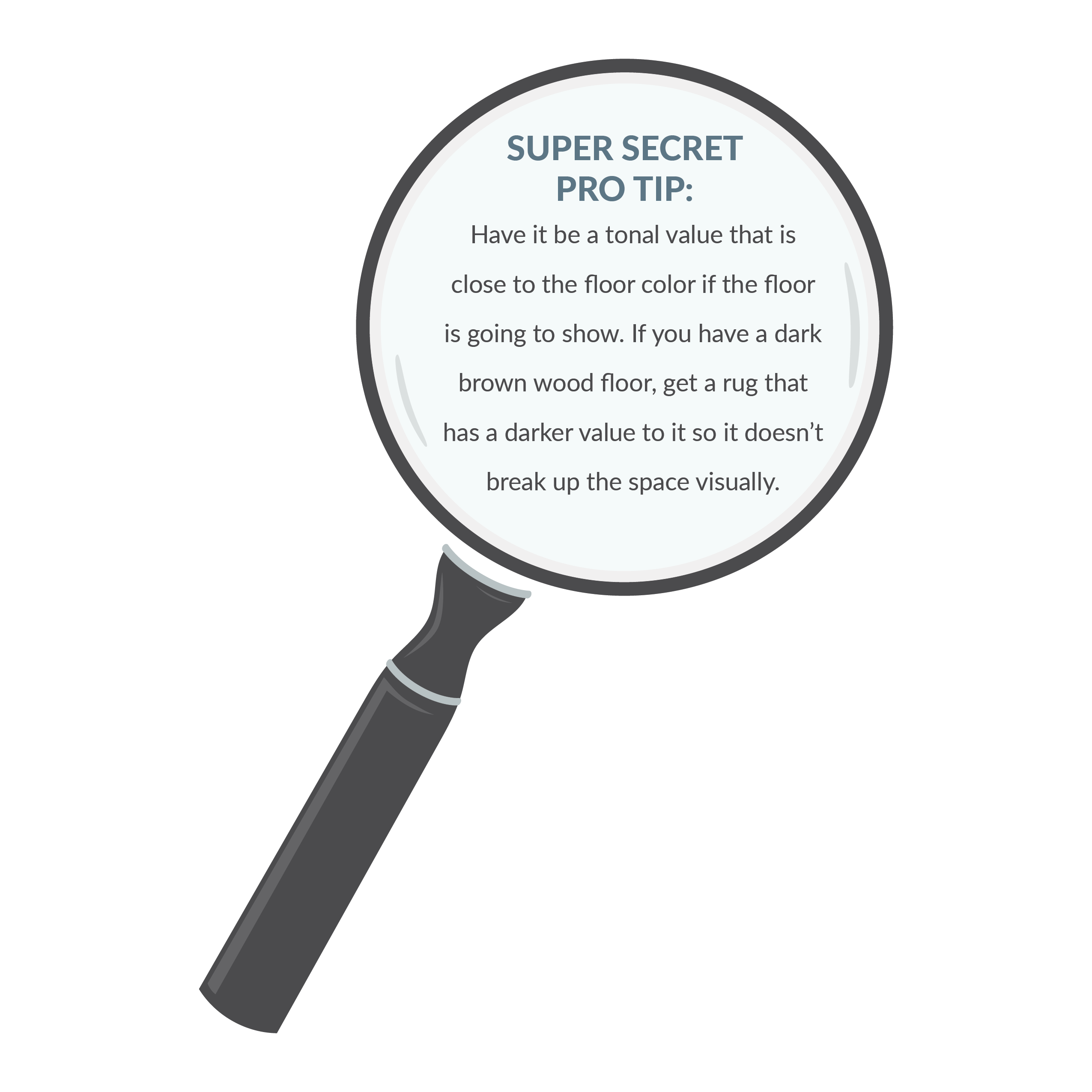
A Bit About Bed Size
Don’t make the mistake of pushing your bed all the way to the side of a wall. If you think this is your only option, you may need to go down a bed size. Make do with a double or a queen or perhaps even a daybed.
Better yet, a storage daybed! Storage Ninja strikes again! Bottom line: You need to have room for passage on both sides- it doesn’t have to be even, but you need the room.
For more details, check out this video on the Top 5 Bedroom Design Tips!
7. Bring in Nature

Last tip but super important: bring in plants and nature. 🪴 This can be anything from a tiny Pothos plant on a shelf to a terrarium, but nature is a really crucial element to have in bedrooms, even just for the oxygen exchange alone. Hanging plants are a great option when you need to save space, but even something as simple as flowers in a vase works!
So there you have it! With these insider tips now under your belt, you’ll be able to create a slam-dunk sleep sanctuary in no time!
May all your design dreams come true!
If you’re looking for our favorite bedding products, be sure to check out the The Store or these incredible retailers:
One thought on this post
Leave a Reply
You must be logged in to post a comment.





I have a 10 x 14 master bedroom with a window not used on the 14′ corner wall. This is also where the Queen bed is. My question is this, should I cover the window somehow because it’s faceing a porch not used? This room is tricky. The windows are smaller 30″ wide windows. The other window is right next to this on on the corner of the 10′ wall. HELP!